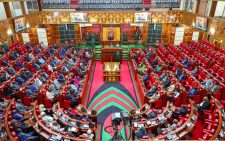This is the surest way to keep journalists safe

It has been a rough week for the media in Kenya. A journalist with the Mediamax group was shot three times while on duty in Nakuru and had to undergo surgery. It was as blatant as it can get, meting out violence against the media. Then, a journalist with CNN International was roughed up in Nairobi while covering the same protests. In another incident, security officers abducted veteran journalist Macharia Gaitho and initially did not identify themselves. He was released after going through a harrowing experience.
Gaitho, a soft-spoken, gentle soul and leading columnist, is hard to mistake, given his rugged beard. He is no friend of the political class, but he has mellowed with time, even if his writings are as much on point as before.
In another incident, goons appeared at a press conference, where reporters were roughed up again. In all these incidents, nobody came to the defence of the media or to explain these incidents, except the media themselves. Later in the day, the media regulator, the Communications Authority, issued an advisory to guide the media in telling the protest story.
Earlier in the week, a young man had threatened the media for not covering a story the way he wanted it covered. The point of contention for him was the disputed number of bodies retrieved from a dumpsite in Mukuru, Nairobi.
While the media reported that at that point of the developing story, a little under 10 bodies had been retrieved from the dumpsite, the young man insisted that the number was much higher and thought that the media was colluding with the authorities to downplay the numbers. There are still more threats against the press on the way.
The unfortunate thing about journalism is that everybody believes that they know better how journalists should tell their stories. While journalism subscribes to objectivity, the parties to the story tend to favour having it told in a manner that favours them.
It is not the first time the business of journalists has been on the receiving end of the authorities, of the organised goons, of commercial interests and even of the organised civil society groups.
The task of telling stories is not easy. Some have skeletons to hide, and they may only be interested in scoring points and want to use whatever means necessary to achieve their objectives. This is not a preserve of Kenya; journalists worldwide tend to be caught between these competing interests.
But journalists do not manufacture stories; good journalism does not do that. Journalists are witnesses to history, storytellers who only show up to tell a story that exists. If there had been no protests, Catherine Wanjeri wa Kariuki would not have been on the streets of Nakuru at that hour, and certainly not as a journalist anyway.
She showed up with all the precautions the Kenyan media scene offers. Yet that did not keep her safe – she was still in harm’s way.
The response has often been a call to train journalists to cover tricky situations such as this safely, but that is only one side of the coin. The source of danger for journalists remains the government or its agents leading the way.
First, the government should eliminate circumstances that lead to stories that they don’t like. If it had met its end of the bargain with the public and delivered the services per the Constitution, there would have been no protests, and Gen Zs would not have been on the streets. Let the government do the right thing.
Secondly, the government must train its agents to respect journalists specifically, but more broadly, to respect the law. The harm meted out on journalists and citizens generally violates the Constitution, yet these officials have to function per the Constitution. Journalists must be granted protection.
— The writer is the Dean of Daystar
University’s School of Communication










